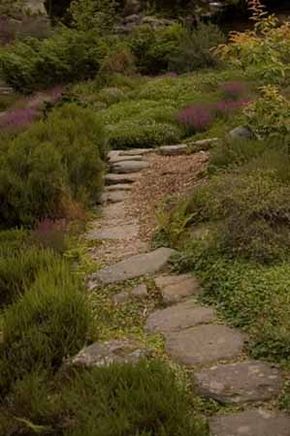Ground covers are perennial plants or, sometimes, low-growing shrubs that form a stable, solid mat of growth, replacing either lawn or garden beds. The lawn itself is one kind of ground cover that is a landscaping standby, even in areas where it is not that easy to keep lawn grass alive. It is best not to mix too many kinds of ground covers into the same area, for they will spread and become intermixed in a way that is hard to handle.
No one can give you a list of all possible ground-cover plants. Ground covering is a way of using plants, not the plants themselves.
To function well, a ground cover should grow thickly enough to block out most competing weeds, look good for all or most of the year, prevent erosion, and not be in constant need of repositioning.
There are flowering and nonflowering ground covers. Many ground covers are tough enough to grow in root-filled soil in shade under trees.
- Ground covers can be taller or shorter, as you please. Typically, ground covers should not be used in dinky clumps. Rather, mass them generously over wider areas for visual appearance and easy maintenance.
- Plant ground cover in a spot that is difficult to mow or hard to use for grass or other plants because of tree roots or shade.
- Plant ground cover in pockets of soil between tree roots. Soil pockets are easiest to find near the trunk of the tree, where roots have become stout and no longer riddle the earth. Just add some organic matter, as necessary, to get ground cover off to a good start, and then water as needed during dry weather.
Pocket plantings are great places to try less common and especially beautiful ground covers like European or American gingers, epimedium, and golden star to enhance your overall landscape design.
©Publications International, Ltd.
